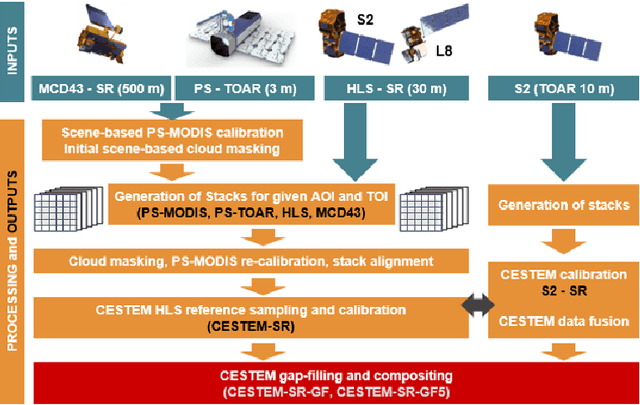Annett Wania
Planet Labs GmbH, Germany
RapidAI4EO: Mono- and Multi-temporal Deep Learning models for Updating the CORINE Land Cover Product
Oct 26, 2022Abstract:In the remote sensing community, Land Use Land Cover (LULC) classification with satellite imagery is a main focus of current research activities. Accurate and appropriate LULC classification, however, continues to be a challenging task. In this paper, we evaluate the performance of multi-temporal (monthly time series) compared to mono-temporal (single time step) satellite images for multi-label classification using supervised learning on the RapidAI4EO dataset. As a first step, we trained our CNN model on images at a single time step for multi-label classification, i.e. mono-temporal. We incorporated time-series images using a LSTM model to assess whether or not multi-temporal signals from satellites improves CLC classification. The results demonstrate an improvement of approximately 0.89% in classifying satellite imagery on 15 classes using a multi-temporal approach on monthly time series images compared to the mono-temporal approach. Using features from multi-temporal or mono-temporal images, this work is a step towards an efficient change detection and land monitoring approach.
RapidAI4EO: A Corpus for Higher Spatial and Temporal Reasoning
Oct 05, 2021


Abstract:Under the sponsorship of the European Union Horizon 2020 program, RapidAI4EO will establish the foundations for the next generation of Copernicus Land Monitoring Service (CLMS) products. The project aims to provide intensified monitoring of Land Use (LU), Land Cover (LC), and LU change at a much higher level of detail and temporal cadence than it is possible today. Focus is on disentangling phenology from structural change and in providing critical training data to drive advancement in the Copernicus community and ecosystem well beyond the lifetime of this project. To this end we are creating the densest spatiotemporal training sets ever by fusing open satellite data with Planet imagery at as many as 500,000 patch locations over Europe and delivering high resolution daily time series at all locations. We plan to open source these datasets for the benefit of the entire remote sensing community.
 Add to Chrome
Add to Chrome Add to Firefox
Add to Firefox Add to Edge
Add to Edge